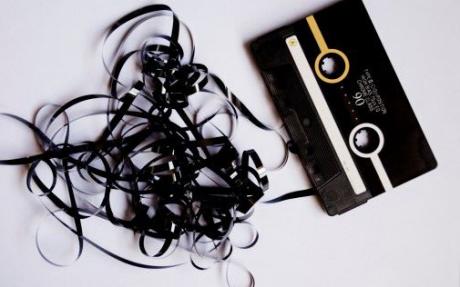I was having some trouble starting Clementine this morning. This came after I initiated a reboot. Reboots and further attempts to start Clementine all ended in Clementine crashing. Something was seriously misaligned.
I started it from the command line (by typing clementine and hitting Enter). This also resulted in a crash but did give some interesting output in the Terminal. Near the end I found this information in an error:
CREATE TABLE directories ( path TEXT NOT NULL, subdirs INTEGER NOT NULL)
A quick search found this article which did have a viable solution. It is a rather heavy-handed solution and I do not recommend it unless nothing else works.
Instead I modified that solution into one which didn’t delete all of my playlists and configuration changes for Clementine. First I simply moved the entire Clementine configuration folder (similar to their deletion except I still have the files):
mv ~/.config/Clementine ~/.config/Clementine_old
Starting Clementine in the usual manner now worked. So the theory was sound. Now I wanted to see if I could get my database back. I closed Clementine and ran this command:
mv ~/.config/Clemetine_old/clementine.db ~/.config/Clementine/clementine.db
When I launched Clementine again I had my database back (including all of my playlists). Next I wanted to see if I could keep my old configuration file so I again closed Clementine and ran this command:
mv ~/.config/Clementine_old/Clementine.conf ~/.config/Clementine_old/Clementine.conf
This also worked. So it would appear that it was perhaps not file corruption (as the article linked above suggests) but rather something more subtle and complex. Regardless, at this point I was satisfied with the success of my fix, but my scientific curiosity was wondering about the other files. Altogether there were six files in the Clementine configuration folder:
Clementine.conf
clementine.db
clementine.db-journal
clementine.db.bak
clementine-scope-backup.db
jamendo.db
(The clementine.db-journal file may not be present on all systems.)
I have no idea what those other four files do (well, except the jamendo.db folder which is presumably the database if one uses Jamendo through Clementine), but I tried moving each one back into the main folder one at a time (restarting Clementine between each one). None of them had any effect. This further supports the thought that it was a problem with file corruption.
I’m still not clear what caused the issue, but this is as far as I am willing to investigate at this time. Hope this helps you.

![12-10-2015_[1]](http://jamesisin.com/a_high-tech_blech/wp-content/uploads/2015/12/12-10-2015_1-300x225.png)
![12-10-2015_[2]](http://jamesisin.com/a_high-tech_blech/wp-content/uploads/2015/12/12-10-2015_2-300x225.png)
![12-10-2015_[3]](http://jamesisin.com/a_high-tech_blech/wp-content/uploads/2015/12/12-10-2015_3-300x225.png)
![12-10-2015_[4]](http://jamesisin.com/a_high-tech_blech/wp-content/uploads/2015/12/12-10-2015_4-300x225.png)
![12-10-2015_[5]](http://jamesisin.com/a_high-tech_blech/wp-content/uploads/2015/12/12-10-2015_5-300x225.png)
![12-10-2015_[6]](http://jamesisin.com/a_high-tech_blech/wp-content/uploads/2015/12/12-10-2015_6-300x225.png)